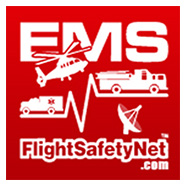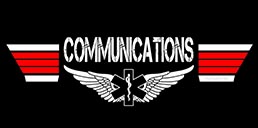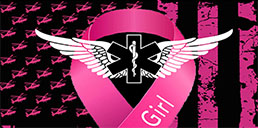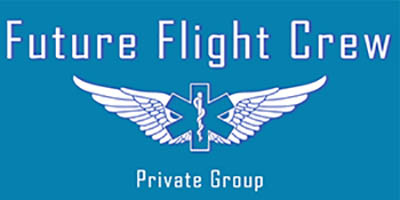COLORADO - Helicopter EMS provider Air Methods is expanding its in-network health insurance agreements and partnering with the American Red Cross to carry blood and plasma on its aircraft.
Air Methods also said it is refunding fees for Medicare beneficiaries enrolled in its advantage membership program, which was terminated in April.
The company was one of several air ambulance operators selling annual “memberships” to the public that guaranteed they would not be billed beyond the amount of their insurance reimbursement. Such plans generally cost $100 per year per person or less. Company competitors PHI Air Medical and Air Evac Lifeteam and its AirMedCare network affiliates continue to offer the plans.
Air Methods noted that Medicare Part B beneficiaries are already covered for air medical services without a membership and that in 2018 the average out-of-pocket cost for Medicare patients transported by Air Methods was $280, including copays and deductibles. The company said it now has 47 in-network agreements with health insurers across the U.S. and that 75 percent of its patients are covered for its services through commercial insurance, Medicare Part B, or Medicaid.
Further, Air Methods will continue to work with patients to settle insurance claims that are denied or underpaid, in or out of network. “When a patient works with the patient-advocacy team, they normally only pay their deductible or co-insurance. On average, for all patients, regardless of payer, the out-of-pocket cost for Air Methods’ services is only a couple hundred dollars,” the company said. Air Methods also said it works with local and county governments to educate patients about advocacy and financial-assistance programs.
Air Methods’ moves come as the air ambulance industry continues to face scrutiny for charging privately insured and uninsured patients substantially more than it charges Medicare and Medicaid patients and more than private insurance often covers. Patients with private insurance are often liable for the difference between the billed and reimbursed amounts. The industry has defended this so-called "balance billing," claiming that reimbursements are less than actual costs for patients covered under government-funded health care programs and some private insurance or that their private insurance excludes the air ambulance provider from its in-network covered services.
A 2019 study by the U.S. Government Accountability Office (GAO) found that 69 percent of air ambulance transports of privately insured patients were out of network and were therefore subject to balance billing. A GAO analysis of 2017 data showed that the median price for a helicopter air ambulance transport was $36,400, an increase of 60 percent since 2012 ($22,100). The 2017 figure was based on data that showed a median charge per mile of $242 and a median distance of 45 statute miles.
During the survey period (2012 to 2017), the number of privately insured patient transports increased from 13,087 to 20,726, but the proportion of out-of-network transports of these patients declined from 75 to 69 percent. Over that same period, the geographic area served by helicopter air ambulance bases also increased 23 percent, while the number of air ambulance bases increased from 752 to 868. (Within that total, the number of fixed-wing air ambulance bases grew during the period from 146 to 182.) Roughly 60 percent of the new air ambulance helicopter bases were in rural areas, with the largest growth occurring in the southern and western U.S.
The GAO pointed out that slightly less than half the new helicopter bases are in areas that have more than 50 percent existing air ambulance coverage and not all these areas have demonstrated additional demand. While the industry touts air ambulance growth in rural areas as an essential guardrail in the face of hospital closures there, the GAO notes that out of the approximately 2,400 rural hospitals, 3 percent closed between 2013 and 2017. And the air ambulance industry reports that while overall it is operating fewer flights, the trend is toward flying more hours and longer distances with a nationwide EMS helicopter fleet that has more than doubled since 2003 to more than 900.
The “rural rationale” also has spawned a move to larger EMS helicopters that carry more medical equipment and supplies. This includes the aforementioned agreement with the American Red Cross to supply blood and plasma for all its aircraft currently unaffiliated with a regional blood center or health system. The agreement covers 98 Air Methods bases nationwide.
Air Methods noted that “access to blood and plasma was not a feasible option given the limited resources within the remote areas air medical access is most needed. This partnership with the American Red Cross ensures that all Air Methods aircraft will have the lifesaving biomaterials ready when needed."
The shift to larger helicopters in some markets comes as the industry seeks to reposition itself as the provider of “flying emergency rooms” as opposed to just a time-saving conveyance that gets patients to hospitals within the “golden hour” following an accident or medical emergency. It was also part of the impetus for Airbus Helicopters to offer the lower-cost, lighter-weight EC145e intermediate twin in the U.S.
Ever thought about a career as a Flight Medic, Flight Nurse, Flight RT or EMS Pilot?
Join our Future Flight Crew Private Facebook Group. It's chock full of talented folks who will help you succeed.
Answer 3 simple questions to join, takes less than a minute.
CLICK THE BANNER to Sign Up (It's Free):
EMS Flight Safety Network is The People Who Keep Air Medical Safe
- EMTs | Medics | Nurses
- Pilots | Firefighters | ER Staff
- Security | RRTs | Trauma Doctors
- Landing Zone Coordinators | Dispatchers
- Specialty Transport Teams | Flight Surgeons
- Flight Communication Specialists | Mechanics | Chaplains
- Police | Fire Police | CNAs | NICU Nurses | Retirees | Veterans
- The Family, Friends & Coworkers Who Support These Professionals














